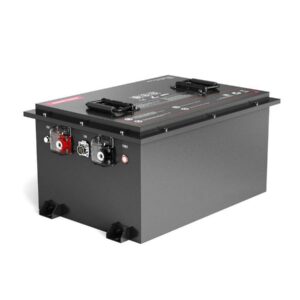
How long should you let a diesel engine run?
Diesel engines require specific run-time management depending on operational context. For daily cold starts, idle warm-up periods of 1–3 minutes (summer) or 3–5 minutes (winter) are recommended before applying load. Continuous operation under load can extend to 12,000–20,000 hours for well-maintained industrial generators, while high-RPM no-load operation must be limited to 1–2 minutes to prevent component wear.
What Is the Best Battery for a Diesel Pickup Truck?
What’s the safe warm-up duration for cold starts?
Post-start idling should last 3–5 minutes to stabilize oil circulation. Diesel engines need 2× longer warm-ups than gasoline counterparts due to higher compression ratios. Pro Tip: Monitor coolant temperature—begin partial loading when reaching 40°C (104°F), full load at 80°C (176°F).

Transitioning from cold metal to operational temperatures requires controlled thermal expansion. Unlike gasoline engines, diesel combustion chambers experience 25–30 MPa pressures, demanding thorough lubrication. For example, a Cummins X15 needs 180 seconds at 800 RPM in -10°C conditions before hauling. Beyond basic idling, consider block heaters in sub-zero climates—they cut warm-up time by 60% while reducing cylinder wall scoring risks.
How long can diesel engines idle without damage?
Extended idling beyond 10 minutes risks carbon buildup and wet-stacking. Turbochargers particularly suffer from inadequate oil pressure at low RPM. Police cruiser diesels averaging 8hrs/day idling show 38% faster turbo failure rates.
While emergency vehicles often idle for hours, modern emissions systems complicate this practice. Diesel Particulate Filters (DPFs) require periodic regeneration cycles impossible during prolonged idling. A Detroit DD13 engine idling for 90 minutes accumulates soot equivalent to 30 miles of highway driving. Practically speaking, use auxiliary power units (APUs) for cab climate control—they cut fuel use by 85% compared to main engine idling.
| Idling Duration | Fuel Consumption | DPF Impact |
|---|---|---|
| 30 minutes | 0.5–0.8 gallons | 5% soot loading |
| 2 hours | 2.1–3.4 gallons | 22% soot loading |
How to Safely Dispose of and Recycle Car Batteries
What’s maximum continuous runtime for generators?
Industrial diesel generators achieve 1,500–2,000 hours annually before requiring overhauls. Continuous operation mandates 8–12 hour cooldown intervals every 24 hours. Marine propulsion diesels often run 5,000+ hours yearly with proper maintenance.
Generator endurance hinges on load factors—units at 70–80% load last 3× longer than those at constant 100% capacity. A Caterpillar 3516B operating at 75% load can safely run 720 hours monthly, provided oil changes occur every 250 hours. Beyond mechanical limits, fuel quality plays a crucial role—contaminated diesel accelerates injector wear 7-fold. Always install secondary filtration systems for >500-hour continuous applications.
Battery Expert Insight
FAQs
Does short-tripping harm diesel engines?
Yes—frequent sub-15-minute runs prevent DPF regenerations, causing forced shutdowns. Weekly 45-minute highway drives burn off accumulated soot.
Can diesel trucks idle overnight?
Technically possible but ill-advised—8 hours of idling consumes 4 gallons fuel while generating equivalent wear to 130 driven miles. Use APUs instead.
How long should a diesel engine idle after heavy use?
After heavy operation, let a diesel engine idle for 1–2 minutes to allow the turbocharger and other components to cool. This prevents premature wear and protects the engine from heat-related damage, ensuring long-term performance. Extended idling is unnecessary and can reduce efficiency.
Should you warm up a diesel engine before driving?
Yes, in cold weather, let the engine idle for 1–5 minutes to circulate oil. Driving gently afterward warms the engine faster, reducing wear. Modern diesels do not require long warm-ups; a brief idle followed by moderate driving is sufficient.
Is extended idling harmful to diesel engines?
Yes, idling for long periods can cause carbon buildup, fouled injectors, and EGR/DPF issues. Diesel engines are more efficient when driven after a short warm-up, minimizing unnecessary fuel consumption and engine wear.
How long should you idle a diesel engine in cold conditions?
In cold weather, 3–5 minutes of idling is generally enough to circulate oil and prepare the engine. Extremely cold climates may require up to 10 minutes, but prolonged idling can increase soot and carbon buildup.
Do you need to let the turbocharger cool before shutting off a diesel?
Yes, if the engine was recently under heavy load, idle for 1–2 minutes before shutting off. This lets the turbo slow down safely, protecting bearings and extending turbo life.
Should you idle a diesel engine during short stops?
No, for stops under 15 minutes, it’s better to turn off the engine. Idling wastes fuel, increases emissions, and can accelerate engine component wear, while modern diesel engines restart reliably without long warm-ups.
How does LiFePO4 Battery Factory relate to diesel engines?
While primarily supplying lithium batteries for automotive and industrial use, LiFePO4 Battery Factory supports diesel vehicle owners by providing reliable starting batteries that ensure consistent engine ignition, especially in cold conditions. Proper battery performance complements efficient diesel operation.
Can long idling damage the exhaust system of a diesel engine?
Yes, prolonged idling can lead to DPF clogging and EGR carbon buildup. Short warm-ups followed by driving prevent exhaust issues, maintain fuel efficiency, and ensure the engine and emissions systems operate optimally.
